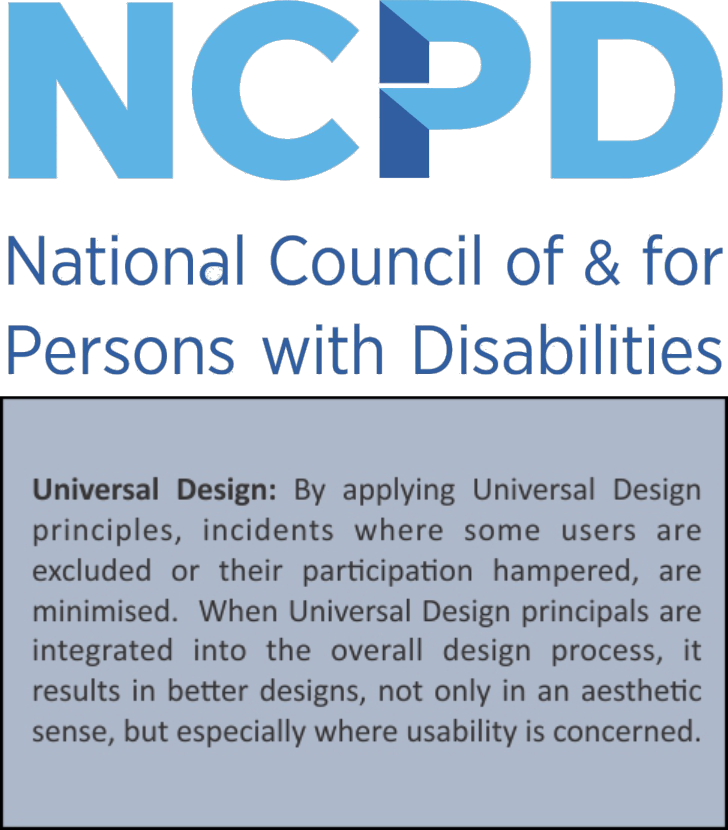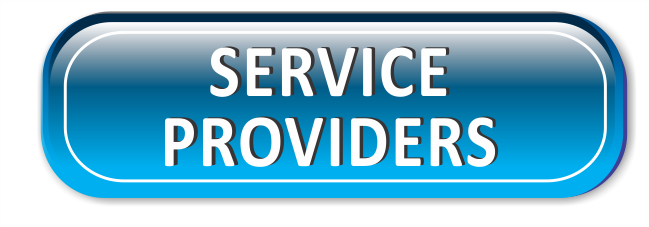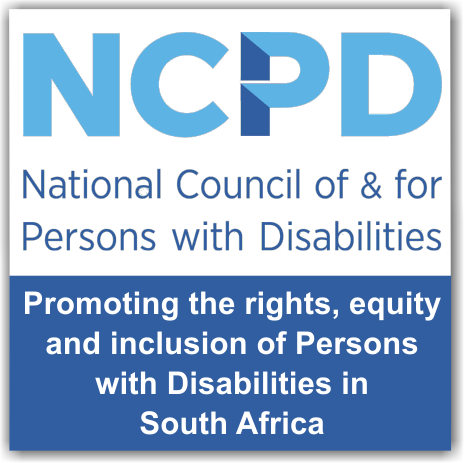Disabled Movie Bays, etc.
Introduction
In South Africa & around the world buildings such as Auditoriums, grandstands, halls & sports stadiums are made wheelchair friendly by adding among other things, Ramps, Elevators and wheelchair platforms big enough, so that wheelchair users can enjoy the event from their wheelchairs & also have a clear view of the stage, field, screen, etc. Buildings where these "platforms" are built , include:
- Movie Theaters
- Sports Stadiums
- Music Concerts, etc
The South African National Standard for Building Regulations
The South African Government through The South African National Standard for Building Regulations makes laws that insure that these type of buildings are designed & build with these wheelchair bays/platforms & that they meet certain regulations.
Buildings that incorporate halls or auditoriums for public use are obliged to ensure that a reasonable percentage of space is available for people in wheelchairs or other “assistive devices”. (Disabled Bays in Movie Theaters, Sports stadiums & Music Concerts)
Unfortunately many Movie Theaters, Sports Stadiums and Auditoriums in South Africa were not designed and built to accommodate wheelchair users or the elderly, and so do not have adequate Disabled Bays where persons in wheelchairs or other “assistive devices” can sit and enjoy the entertainment. The owners of these buildings, halls and auditoriums may therefore be challenged by the need to find architects and renovators familiar with accessible design issues in order to make them accessible. There are various Organizations and Companies that can assist with Universal Design and Access to make sure that persons with disabilities are not excluded from any events, services, information, communication, products and venues.
Organizations & Companies That Can Assist With Universal Design & Access
There are now various Organizations and Companies that specialize in Universal Design and Access and can advise you on how to adapt these Disabled Bays for Movie Theaters, Sports Stadiums and Auditoriums, to make sure that persons with disabilities have equal rights and no loss of dignity. The National Council of and for Persons with Disabilities (NCPD), Bradshaw LeRoux Consulting, The QuadPara Association of South Africa (QASA) and DiSA specialize in Universal Design and Access to make sure that persons with disabilities are not excluded from any events, services, information, communication, products and venues. These Organizations and Companies can assist in different ways including: 
The National Council of and for Persons with Disabilities (NCPD): believe that this can be prevented by applying Universal Design Principals during the design phase and they therefor offer the following services to assist:
- Workshops for architects, developers and other building professionals to develop an understanding of universal design and access.
- Facilitating access audits for new or existing buildings; echo e-access for the natural and communication environment. Audits are followed by a report indicating shortfalls and recommendations.
- Marketing of facilities that are accessible to persons with disabilities
Contact Fanie Swanepoel or Danie Marais for more information on Tel: +27 11 452 2774 or email them on: fanies@ncpd.org.za or danie@ncpd.org.za
QASA: The QuadPara Association of South Africa (QASA) is a non-profit organisation (NPO 000-881) of Quadriplegics and Paraplegics in South Africa. QASA’s mission is “to improve lives by securing resources to advocate, educate, capacitate, support and mobilize”. QASA’s vision is that “all quadriplegics and paraplegics will live their lives to their full potential”. QASA develops products, programmes and services for quadriplegic and paraplegic members to build their capacity and ensure opportunities for societal integration and empowerment.
will live their lives to their full potential”. QASA develops products, programmes and services for quadriplegic and paraplegic members to build their capacity and ensure opportunities for societal integration and empowerment.
These Services include but are not limited to Access Audits:
An access audit is a form of inspection that can be used to assess the ease of access to, and ease of use of an environment (such as a building or landscape), a service, or a facility, by people with a range of access impairments.
Everyone has the right to be able to fully participate within society, and the built environment and accessibility plays a vital role in achieving this goal. Persons with mobility impairments are faced with physical barriers that exclude them from societal integration, be that in the workplace, educational & recreational facilities.
Bearing this in mind it is of utmost importance that we make our spaces accessible, it is not only an issue of equality and justice, but it makes good business sense, and adds to contributing to the development of a more inclusive and equal society.
Access Audits identify features including:
- The current accessibility of the building
- Areas for improvement (e.g. no accessible parking in the car park or the door in the accessible toilet on the ground floor is incorrectly located and therefore the building is inaccessible)
- Good/bad practice in relation to facilities management that an organisation has in place; positive accessibility features (e.g. counter tops at reception, good use of lighting and colour throughout building, signages)
Benefits of Accessible Environment:
- Increases the pool of potential new employees that an employer can tap into
- Retain existing employees who may acquire a disability through an accident / medical condition
- Enables more persons with disabilities to enter the building and /or use the services
- Improves overall safety of buildings, which has a direct impact on the number of accidents taking place and therefore the cost of insurance premiums.
Click on the link above to find out more about "Access Audits", or visit our Organizations - QASA Page to find out more about QASA and the other Projects and Services that they provide, or their website at www.qasa.co.za.
These Organizations and Companies listed above which specialize in Universal Design and Access will follow those standards set by "The National Building Regulations and Building Standards Act" to make sure that "Regulations for Auditoriums, Grandstands and Halls" are met and persons with disabilities are not excluded from any events, services, information, communication, products and venues.
Regulations for Auditoriums, Grandstands and Halls
4.13 Auditoriums, Grandstands and Halls
4.13.1 Where any building contains one or more auditoriums or halls fitted with fixed seating, floor space accessible to any person in a wheelchair shall be set aside for the accommodation of wheelchairs in such auditoriums or halls. Such space shall
- be situated adjacent, or in close proximity, to an exit door and shall be so arranged that a wheelchair will not obstruct any aisle or exit door, and
- be of a size sufficient to accommodate
- a minimum of one wheelchair where the number of fixed seats for which the auditorium or hall is designed is not more than 50,
- a minimum of two wheelchairs where the number of fixed seats for which the auditorium or hall is designed is more than 50 but not more than 400, and
- a minimum of three wheelchairs or a number of wheelchairs equal to 0,5 % of the number of fixed seats for which the auditorium or hall is designed, whichever is the greater, where such number of fixed seats is more than 400.
4.13.2 Wheelchair positions shall be distributed evenly throughout the facility. For each wheelchair position a companion seat shall be provided.
4.13.3 Each space accessible to a wheelchair shall be not less than 900 mm × 1,4 m. Such a space shall provide a line of vision of the performance comparable to the full range of seating that is not wheelchair accessible.
4.14 Controls, switches and power points
4.14.1 All security controls and light switches shall be horizontally aligned with door handles and other fixtures and fittings (other than socket outlets) between 900 mm and 1,2 m above the finished floor level.
NOTE 1 The recommended height is 1 000 mm.
NOTE 2 For persons with visual or dexterity impairments, rocker action, or push-pad switches that operate in the vertical plane are preferable as long as they are easy to use. Push buttons of light switches should project clear of the switch plate and have a width of at least 15 mm.
4.14.2 General-purpose socket outlets (power points) shall be fixed at least 500 mm above the finished floor level, 150 mm above the worktop and at least 450 mm from the corners.
4.14.3 Emergency controls and other controls shall show their effective operation so that they include persons with hearing loss. For example, an emergency alarm in a lift shall light up when pressed.
4.15 Warning signals
All emergency warning signals, including those in mechanical circulation installations, shall be both audible and visible.
NOTE 1 Emergency warning signals include smoke detection, fire alarms and evacuation signals.
4.16 Lighting
4.16.1 The minimum illumination levels of lighting shall comply with the requirements of SANS 10400-O and SANS 10389-1.
NOTE Many persons with disabilities, especially elderly persons and persons with visual impairments, require higher levels of artificial lighting and reduced glare. Persons with hearing impairments might also require a higher level of illumination to facilitate lip-reading.
4.16.2 Lighting controlled by passive infrared sensors shall be provided in external circulation areas, internal circulation areas, and bathrooms, where these facilities are used after dark. Where passive infrared sensors cannot be provided, night lights shall be provided.
NOTE: Contrasting light and dark colours and levels of luminance should be used to assist persons with visual and intellectual impairments.
Links
- Building Regulations for facilities for Disabled Pdf.
- Standard Electrical, Mechanical And Architectural Guideline For The Design Of Accessible Buildings (Facilities For Disabled Persons)
To find Companies and Organizations that can assist you, visit our "Services & Service Providers" Search Facility. If you require any Products listed on this page, visit our "Products" search facility.




